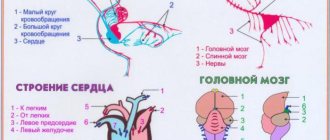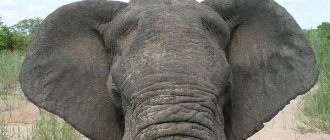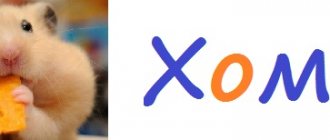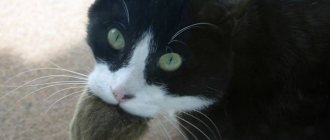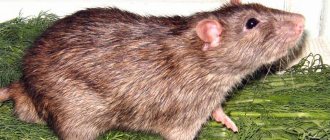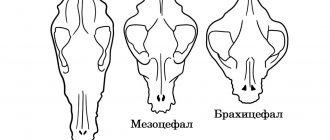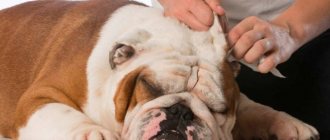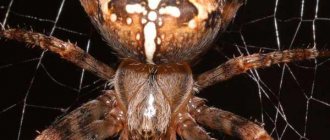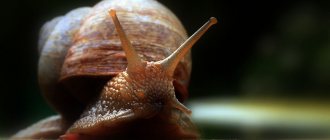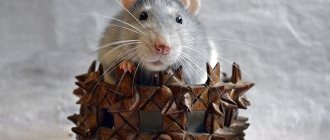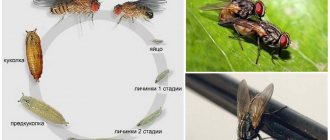- home
- Rat
- Care
07/10/2019 Rat teeth are amazingly sharp and hard. The jaws of a small rodent easily create a pressure of over 1.5 tons per 1 cm². Such jaw power allows the animal to easily bite through lead pipes and steel wire, chew cinder blocks, etc. This article will discuss the characteristics of the teeth of the animal, which is gaining popularity as a pet, as well as the prevention of dental diseases in rodents.
Anatomical features
In most mammals, the chewing surface is arranged in a certain way. Their dentition consists of the following types of teeth:
- incisors;
- molars (or molars);
- premolars;
- fangs.
Unlike most mammals, rats have a more specific jaw structure. The dentition of these rodents includes only two types of teeth out of four possible, these are:
- incisors (only the front ones, these animals have no second ones);
- molars.
The places in the row provided for other types of teeth are empty in rats. Thus, in the dentition of rats there are gaps called diastemas.
Choosing a name for Dumbo the rat?
The owners are trying to give the young, smart baby Dumbo a deep and meaningful nickname in the hope that the animal's name can influence the character and intelligence of the funny animal. Sometimes it can be difficult to immediately name a pet with a suitable name that emphasizes its individuality and expresses the love of its owner.
It is advisable to take a few days to take a closer look at the habits and character traits of the new family member; most likely, he himself will tell the owner what to call him. The furry baby's nickname can be tied to the color of the rodent's coat and funny ears, human associations from the pet's appearance and funny faces, favorite book and cartoon characters or pop stars. The rodent's nickname should be simple and easy to pronounce in a diminutive form. It is believed that females respond better to nicknames that begin with the letters K, M and D. Males are more fond of names with the letters S, K, M and D, long-eared pets are more willing to get used to nicknames with the letters T, N, L, M, K , S, Sh and R.
The name for a Dumbo rat girl can be: Knopa, Scully, Masya, Dana, Molly, Ksyusha, Marta, Alice, Dasha, Klava, Matilda, Gina, Darcy, Alpha, Kayla, Linda.
The name for a dumbo boy rat can be: Kuzya, Tyson, Tim, Rocky, Simson, Garik, Steve, Venya, Bucks, Rocky, Dick.
It doesn’t matter what the owner calls the smart-eared baby. In any case, the baby rat Dumbo will sincerely adore and faithfully wait for his beloved owner, giving him his incredible tenderness and selfless love.
Video
How many teeth does a rat have
As for the number of teeth in rats, the little animal has 16 of them:
- 4 incisors;
- 12 molars (molars).
On the upper and lower jaws, the arrangement of teeth is the same - according to the 3-2-3 pattern. In the center (i.e., in front) of each jaw there is a pair of incisors, which are surrounded at a distance on both sides by triplets of molars.
Skeleton
Despite its lightness, the skeleton is strong, mobile and elastic.
The skull and its facial part are elongated; the joints of the bones are well developed on the skull. It contains paired coronoid, frontal, parietotemporal, lamboid, interparietal bones and unpaired occipital bones.
The lower jaw can move in three directions: across, along and up.
Like all mammals, the mouse spine is divided into five sections and includes:
- cervical – 7 vertebrae,
- thoracic – 13 vertebrae,
- lumbar – 7 vertebrae,
- sacral – 4 vertebrae, two of which are fused,
- caudal - the number of vertebrae can reach 20.
The sternum is narrow and consists of 13 paired ribs. Some species of mice do not have collarbones, which gives them the ability to crawl through tiny holes.
Features of incisors
Thanks to their strength, the animals chew through not only wood, bricks and concrete, but even metal. Incisors appear in rat pups a week after birth. Their growth process is accelerated - up to 2-3 mm per week. They reach their usual length by the age of two months. But their growth not only does not stop there, but also does not slow down.
The constant growth of incisors requires regular grinding. Excess length causes many problems, including the death of the animal.
They are covered with enamel only on the front. The back surface is covered with a soft, fast-wearing substance called dentin. This heterogeneous coating determines the sharpness of the incisors.
What to name the animal
You shouldn't give your pet the first name that comes to mind.
It is advisable to choose names for your pet that will highlight its individuality. To choose the right one, you can rely on the recommendations of experienced rat breeders.
- There is no need to rush to give your Dumbo rat the first name you like. You need to take a closer look at the pet, observe it, and note its characteristic behavioral features.
- Each pet is special to its owner and has the right to a “special” name. Therefore, you should not stop at the usual names for rats, but choose an original one.
- If there are several animals, they can be given names from the same category. For example, the names of the planets are suitable.
- Hints in choosing a name can be found in fairy tales, cartoons or nursery rhymes.
It is important to choose a name that can be changed to a diminutive. This is what the owner will most often call his charming pet with big ears.
Dumbo the rat is one of the best pets. Communication with him is always interesting and evokes a lot of positive emotions. Taking care of a rodent is not difficult, and food costs are low.
Home care
To prevent dental disease in your animal, it is important to properly care for your pet. Caring for a rat's incisors involves providing the animal with hard materials for grinding. These are special items that an animal can chew with benefit for its teeth:
- toys;
- bars, etc.
If the rodent does not have access to such materials, it may begin to grind down the incisors on its own. At the same time, the animal makes a sound with its jaws, similar to tapping.
If the continuously growing incisors are not ground down in time, this will lead to their curvature, bending and other deformations that cause suffering to the animal.
Individuals with malocclusion need special precautionary care. They are not able to properly grind off excess length, so the responsibility for shortening lies with the owner of such an animal.
You can help the animal by cutting the enamel. Don’t be afraid to trim your rat’s teeth - this procedure does not take much time and, moreover, it is painless for the animal (the enamel is not connected to the nerve endings). The enamel only needs to be trimmed a few millimeters.
Disease Prevention
To keep your pet healthy and alert, you need to monitor the condition of its teeth and jaws. The appearance of at least one of the following dangerous symptoms should alert the animal owner:
- wounds on the mucous membranes of the lips and cheeks;
- knocking noise that occurs when eating;
- increased secretion of saliva;
- lack of appetite;
- swelling of the mucous membrane or tongue;
- the rat lost a tooth;
- abscess formation.
In this case, you should immediately contact a specialist. The veterinary clinic usually conducts an examination, tests for bacterial microflora, and treats the oral cavity with local antiseptics. If necessary, the doctor can grind or trim the incisors, correct the bite and give all the necessary recommendations for proper care of the pet.
The structure of molars
Molars are wide and flat in shape. Interestingly, rats do not chew, but grind food using molars. When an animal eats, its jaws do not move up and down, but back and forth. Moreover, only one of the jaws moves. Thus, the food does not crumble, but is ground, after which the animal swallows it.
For better grinding of food, ridges and tubercles are provided on the molars. Enamel covers only the sides of the molars - the middle has a dentin coating. It is worth noting that the enamel is very durable - its hardness coefficient is 5.5 (for comparison, for diamond it is 10).
Molars in baby rats erupt alternately from near to far:
- on the 19th day of birth - the first two pairs;
- on the 21st day - the second batch;
- by 4–5 weeks – the third ones complete the dentition.
A six-week-old rodent already has a full set of teeth. Molars grow until the animal is 4 months old, then growth gradually stops.
Feeding
These pets are quite unpretentious in their choice of food, but are not omnivorous, like ordinary ones. Decorative rats are very gentle creatures, often having problems with the intestines and allergies.
Its menu should include:
- grain base - it is better to purchase a special mixture for rodents in pet stores. It should make up 60% of the total diet. You can also feed with unprocessed pumpkin, flax or sunflower seeds;
- proteins - occasionally (1-2 times a week) give a little meat (raw or boiled), chicken, yogurt, cottage cheese, eggs will benefit your pet;
- herbs - parsley, cilantro, dandelion, dill, plantain, radish tops;
- vegetables and fruits (preferably boiled) - apples, bananas, carrots, white cabbage, cucumbers, tomatoes, pumpkin, eggplant, potatoes. Citrus fruits must be treated selectively - they can cause allergies in your pet;
- delicacies - grain sticks, nuts, dates, berries, dried fruits, raisins, crackers (unsalted only), unsweetened cookies, boiled pasta, boiled shrimp and seafood.
It is necessary to give fish oil and specialized vitamins. Animals are fed 2 times a day: morning and evening. The exception is pregnant rats - they are fed 4-5 times a day. If you adhere to the basic requirements for what to feed your rat Dumbo, he will be healthy and cheerful.
If your pet refuses to eat for 1-2 days, you should immediately show him to a veterinarian!
Prohibited Products
If the owner is interested in his pet living as long and healthy as possible, the following products should be avoided:
- chocolate and products containing it;
- other sweets;
- sausage and frankfurters;
- canned food for people;
- raw beans and other legumes;
- cheeses (especially blue and salted);
- soda;
- sprouted potatoes;
- Brussels sprouts and red cabbage;
- green bananas;
- spinach;
- beet;
- fatty and salty foods.
Knowledge of what can and cannot be given to decorative rats will help you correctly formulate the rodent’s menu and avoid unnecessary worries and health problems.
Mineral composition
A rat's teeth are made up of three layers:
- pulp;
- dentin;
- enamel.
Pulp is the soft core. This is a concentration of nerve canals and blood vessels. The pulp is surrounded by a harder layer of dentin. Its thickness exceeds the layers of pulp and enamel combined.
The outer coating – enamel – is the hardest and most durable. The enamel crown contains mineral components, the main one being calcium.
Vaccination
Decorative rats do not need vaccination. No drugs have been developed for them to help prevent the development of diseases in these animals.
Selection and accessories for your pet
An animal's cell must contain several elements:
- drinking bowl;
- feeder;
- nest (place to sleep);
- a mineral stone on which the animal will grind its teeth.
To prevent the animal from getting bored, toys are placed in the house. Rats are very fond of such a device as a hammock. It can be made from a piece of durable fabric or purchased ready-made at a pet store.
Most preferred toys:
- ladders, including rope ones;
- tunnels;
- labyrinths.
Why do rats have yellow teeth?
Thanks to the vertical groove under the rodent's nose, its upper incisors are constantly visible, even when the animal's mouth is closed. Because of this feature, it is clearly visible that the rat has yellow teeth.
Initially, the rodent's incisors are white, but by the 21st day of life, the upper ones acquire a yellow tint. By the 25th day, the upper incisors are already completely covered with yellow pigment, and the lower ones are just beginning to turn yellow.
By the 38th day, the lower ones acquire a rich yellow color, but the upper ones by that time become even more pigmented. Rat teeth retain this difference in the density and richness of the yellow color throughout the animal’s life. In adults, the upper incisors are a rich dark red color, while the lower ones are still colored yellow.
General characteristics of the animal
Depending on the species, the length of a rat’s body can range from 8 to 30 cm. A distinctive feature is a long tail, sometimes exceeding the length of the body. The weight of the animal ranges from 37-400 g. Particularly large individuals of gray rats can reach a weight of 0.5 kg.
Classic shades of wool are gray and brown, although yellow and orange colors are also found. The main types of wild rats are gray and black, widespread everywhere. The rest of the rodents live in a strictly defined area.
The following breeds are best suited for home keeping:
- standard - large animals with a long tail and smooth fur;
- satin - the animals are covered with a thin six, curling blue;
- Dumbo - funny animals with a wide head, pear-shaped body and large round ears;
- Sphynx - hairless rats with pink shiny fur;
- tailless - a distinctive feature is the complete absence of a tail.
Gambian rats find landmines and detect tuberculosis
- Early sleep studies involved tireless researchers forcing rats to wake up to see the effects. At that time, people didn't know what the role of sleep was, but they didn't think that lack of sleep could kill you. During the experiment, the rats who were not allowed to sleep constantly deteriorated in health, as well as in their emotional state. They became aggressive and disoriented, lost their hair, developed sores on their legs and tails, ate more but lost weight, and eventually their internal organs failed completely. After 17-20 days of sleep deprivation, they finally received the sweet grace of death.
- A more humane study found that rats laugh, or at least make a sound that sounds like laughter. The rats studied made these sounds (undetectable to the human ear) when they were tickled.
- Mice and rats were not always considered two different creatures. Of course, the Romans didn't consider this, calling them Rattus Major (big rat) and Rattus Minor (little rat) instead.
- At least 4 genetically unique strains of hairless rats exist in laboratory settings, as well as in the pet trade. In the pet trade they are often called Sphynxes.
- Rats use their whiskers to sense where they are going because their vision is too weak to be of any help. This is why you will rarely see it outdoors where its whiskers do not touch some kind of boundary. This will make them vulnerable to hawks and other predators.
- People have used rats as laboratory assistants, companions, religious icons, and characters in popular fables. They even took on the job of feeding desperate poor people meat, searching for potentially live mines, and some were even trained as electricians to pull wire through walls.
- Legend has it that the rat is supposed to be the first animal of the Chinese zodiac.
- Rats cannot sweat and they do not vomit. Most rats use their tail to get rid of excess heat. Tailless rats don't have that luxury, so if you have one, keep them alone!
- Queen Victoria's Royal Pied Piper gave an albino rat to Beatrix Potter, author of the much-loved Peter Rabbit series. She was one of the first owners of such animals and even mentioned this beloved pet in at least one of her stories.
If you have an interesting or unusual fact about rats, tell us in the comments!
Social structure and reproduction
Photo: Male and female Dumbo
The vitality and growth rate of the rat population has become a household name - in nature, rodents reproduce several times a year. Ornamental dambiks are also quite prolific, however, to breed these animals, owners will need to select a healthy pair with pronounced characteristics of the species. These are: a pear-shaped short body and a long narrow tail, as well as a wide flattened head with large round ears.
The first mating of a female should occur at 5-7 months. Pregnancy in Dumbo rats lasts 21-23 days. One litter usually produces 9-12 adorable babies. Dumbo rat pups are born blind and deaf with a naked body. Moreover, not all newborns may have large, round ears - this species characteristic is difficult to preserve. The individual development of babies occurs very quickly. At 4 days of age, they already begin to hear; at 12 days, dambiks open their small eyes. At the age of 2 weeks, the offspring of Dumbo rats are already actively studying their owners and learning about the world around them.
It is very important for the owner of a Dumbo rat to remember that this charming rodent is a social animal. It is very important to provide your pet with communication with both relatives and humans. Systematically conducted outdoor games with this animal, the affectionate formation of precious trust and reverent love - dambiks become attached to only one person for life. Smart rodents have no trouble mastering simple tricks, fetching small objects, finding treats, and even jumping over barriers. Training brings a lot of pleasure to both animals and humans.
